May 27, 2016
Air Date: May 27, 2016
FULL SHOW
SEGMENTS

Trump’s Other Wall
View the page for this story
Republican Presidential candidate Donald J. Trump says he’ll build a wall along the U.S.-Mexico border to block undocumented immigrants. Now Trump is planning to build another wall, this one to hold back rising seas at his luxury golf resort in Ireland. POLITICO’s Ben Schreckinger tells host Steve Curwood how the Trump Organization specifically cites climate change as a reason to build this wall, despite the real estate mogul’s avowed climate skepticism. (07:05)
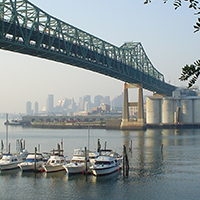
Local Impacts of Exxon’s Alleged “Climate Deceit”
View the page for this story
As investigations into ExxonMobil’s public versus private communication about climate change continue, the Conservation Law Foundation (CLF) is pursuing another legal avenue to hold ExxonMobil accountable. CLF President Brad Campbell tells host Steve Curwood his organization has taken steps to sue the company for polluting the Mystic River at Everett, Massachusetts and for failing to prepare its Everett storage facility for rising sea levels and other climate impacts. (07:10)
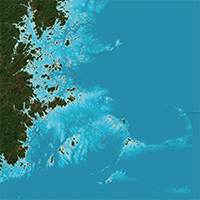
Kids Win Another Landmark Climate Ruling
View the page for this story
A unanimous ruling by the Massachusetts Supreme Judicial Court in favor of youthful plaintiffs and the Conservation Law Foundation requires the defendant, Massachusetts Department of Environmental Protection, to ramp up its efforts to reduce greenhouse gas emissions. We turn again to CLF’s Brad Campbell, who discusses with host Steve Curwood why Massachusetts state law necessitates this action, and the implications of the ruling. (06:10)
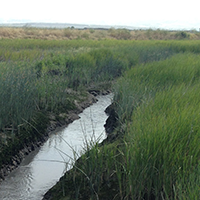
Saving the Bay Area
/ Emmett FitzgeraldView the page for this story
In June, San Francisco Bay Area residents will vote on Measure AA, a proposed tax that would fund wetland restoration. Bringing back wetlands would provide habitat for many bird species, and could help save the Bay Area from the rising seas expected from global warming. But some argue the funding mechanism is unfair. Emmett Fitzgerald reports. (12:00)
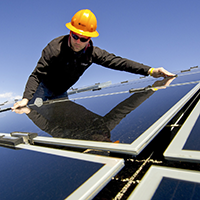
SunEdison Falters; Solar Still Sunny
View the page for this story
Solar behemoth SunEdison’s Chapter 11 bankruptcy filing disappointed its investors, yet the industry as a whole is booming, says Nat Kreamer, CEO of Spruce Finance. Mr. Kreamer explains to host Steve Curwood why one company fell so far within a soaring market, and how public-private partnerships could help the growing solar industry take our energy grid to a low-carbon future. (07:40)
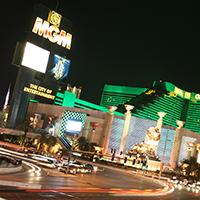
Beyond the Headlines
/ Peter DykstraView the page for this story
In this week's trip beyond the headlines, Peter Dykstra and host Steve Curwood discuss renewable energy news in a Western state that could impact the future of solar around the country, and reflect on the first oil find in the Middle East. (04:30)

BirdNote®: Eastern Wood-Pewee
/ Mary McCannView the page for this story
The Eastern Wood-Pewee is inconspicuous, but its plaintive whistle is unmistakable in the woodlands of east North America. As forests have declined so have the Pewee, and Mary McCann reports that wildlife managers are now trying to save this iconic voice. (02:00)
Show Credits and Funders
Show Transcript
HOST: Steve Curwood
GUESTS: Ben Schreckinger, Brad Campbell, Nat Kreamer,
REPORTERS: Emmett FitzGerald, Mary McCann,Peter Dykstra
[THEME]
CURWOOD: From Public Radio International, this is Living on Earth.
[THEME]
CURWOOD: I'm Steve Curwood. Republican Presidential hopeful Donald Trump has pledged to build a wall along the border between the US and Mexico. But he’s also building a wall we’ve heard much less about.
SCHRECKINGER: This is a sea wall. It would be about 200,000 tons of rock along about two miles of beach at Trump’s seaside golf course in County Clare, Ireland.
CURWOOD: What’s behind Mr. Trump’s other wall. Also, as the San Francisco Bay area prepares for future sea level rise, restoring some lost marshland could be part of the solution.
BOURGEOIS: All the open water you’re seeing here are salt ponds. All of this used to be marsh. So you can imagine if you look across that vast area, if all of that were a wetland and were acting as a giant sponge to absorb those storm water you can imagine how much buffering that would provide for the community.
CURWOOD: That and more this week, on Living on Earth. Stick around.
[NEWSBREAK MUSIC: Boards Of Canada “Zoetrope” from “In A Beautiful Place Out In The Country” (Warp Records 2000)]
ANNOUNCER: Support for Living on Earth comes from United Technologies. Innovating to make the world a better, more sustainable place to live.
Trump’s Other Wall

Donald Trump’s seaside Doonbeg golf resort in Ireland is threatened by rising seas due to climate change. (Photo: Paul O’Mahony, Flickr CC BY 2.0)
[THEME]
CURWOOD: From the Jennifer and Ted Stanley studios at the University of Massachusetts Boston and PRI, this is Living on Earth. I’m Steve Curwood. Republican presidential candidate Donald Trump has famously promised to build a wall along the U.S.-Mexico border to stem the tide of illegal immigration from and through Mexico. Now there’s news that the billionaire wants to build another wall, but this time it’s not in response to human desperation south of the border, but in response to humanity’s degradation of Mother Nature. Ben Schreckinger of POLITICO reported on Mr. Trump's plans and joins me now. Ben, welcome to Living on Earth.
SCHRECKINGER: Hey, Steve. Thanks for having me.
CURWOOD: What is this wall you're talking about, Ben?
SCHRECKINGER: This is a seawall. It would be about 200,000 tons of rock along about two miles of beach at Trump’s seaside golf course in County Clare, Ireland, where they are suffering from some erosion.
CURWOOD: What is this erosion related to? It couldn't possibly be global warming, could it?
SCHRECKINGER: Funny you should ask that. That is it exactly one of the big things that's exacerbating this erosion. Trump's firm admits as much and in a filing they made to the local County planning board in County Clare, Ireland explicitly saying that global warming and its effects are going to make this erosion worse over the course of the coming century and basically are one of the chief reasons they need to build this wall.

Republican Presidential candidate Donald Trump has called climate change a “hoax” -- he later said he was joking -- and has also stated, “I’m not a big believer in man-made climate change.” (Photo: Gage Skidmore, Flickr CC BY-SA 2.0)
CURWOOD: So, to be clear. Mr. Trump has told Irish zoning authorities, sea front authorities, that his company is concerned about the threat of global warming climate change and therefore needs to build a wall.
SCHRECKINGER: That's right. Specifically in this filing that they made to those authorities they say that a likely increase in the rate at which sea levels rise over the coming century, and more importantly an increase in the strength of storms, are going to contribute to this erosion.
CURWOOD: By the way, where are these golf links? What sort of territory are they in in Ireland?
SCHRECKINGER: They're on the west coast of Ireland and they are just south of Galway, which is a popular tourist destination on the other side of the island from Dublin.
CURWOOD: And how did you find out about this?
SCHRECKINGER: I've been following the story of this wall for some months in Irish media reports and then I've been looking deep into government filings where I discovered exactly how Trump's firm is arguing that they need to build this wall.
CURWOOD: To what extent has this golf course already been impacted by climate change?

The Trumps say they have invested $50 to $60 million on the Doonbeg golf course and are prepared to spend more. (Photo: Colin Harris, Flickr CC BY-NC-ND 2.0)
SCHRECKINGER: Well, right actually when Trump bought it, it had suffered really terrible erosion in the winter of 2013 and ’14. It was an unusually stormy winter, the kind of weather that people would point to climate change as a culprit in, and he suffered… some parts of that golf course, 10 meters of erosion of frontage just over the course of just that winter.
CURWOOD: That's like a scale of 30 feet. That's, that's a lot of frontage.
SCHRECKINGER: That's right, there was one storm really just days before Trump closed this purchase that took away six to eight meters in the course of just a day.
CURWOOD: Refresh our memories here. What has Mr. Trump said in the past about climate change in his campaign?
SCHRECKINGER: He's been for years, before he even was running for office, a very outspoken denier of climate change, skeptic of the scientific consensus, however you want to label it. He at one point tweeted that climate change was a hoax created by the Chinese to harm US manufacturing. He’s since said that was a joke, but he’s also called global warming “BS” - He didn't abbreviate that term - He's called it pseudoscience. And more recently his statements have grown more complicated, I would say. He says things like, “I'm not a believer in man-made global warming. The weather is changing, it’s always changing.”
CURWOOD: Last week on our program we reported that he would walk back the Paris accord in a minor way, perhaps or even in a major way - Not very clear about that - but really didn't think that the nations of the world getting together to address climate change was a worthy cause.
SCHRECKINGER: That's right. Trump, whatever the international deal is, has called for renegotiating it. Whether that's the climate accord in Paris or the Iran nuclear deal or our trade deals, the global order including the global consensus on climate change would be up in the air under a Trump presidency.

Trump International Golf Links Ireland has told regulators that without erosion mitigation, Doonbeg golf course could lose up to 100 meters of ground in some places before 2050. (Photo: Colin Harris, Flickr CC BY-NC-ND 2.0)
CURWOOD: Now, given that in round numbers, about two thirds of Americans describe themselves as worried, concerned about global warming, either a great deal or at least a fair amount, how do you think Mr. Trump will need to address global warming during the presidential general election?
SCHRECKINGER: That's a good question, and Trump's position, as you pointed out, does put him out of step with two thirds of the electorate. At the same time, we haven't really seen many people voting on the basis of climate change as an issue. We've seen advocacy groups try to make this an issue that people are voting on. So far they've had very little success doing that. Certainly people are going to keep making an issue out of this inconsistency in Trump's statements, and it's probably a problem for him not only on the issue of climate change, whether he takes it seriously enough, but also on sort of the broader perceptual issue as Democrats pick up where Marco Rubio left off, try to tag Trump as someone who's misleading the American people. The inconsistency here between what is doing to protect his holdings and what he says everyone else should be doing has the potential to feed into that narrative.
CURWOOD: You're not popular with the Trump campaign, Ben. As I understand it in March they yanked your credentials, kicked you out a press conference in Florida. Why doesn't Mr. Trump want you reporting on his activities?
SCHRECKINGER: That's a good question. I suppose I wouldn't care to speculate. If you were to ask Trump from what he said is that I am a dishonest third-rate reporter. He said publicly, at least, that I write very poorly and incorrectly, although privately has told me that he does respect my writing abilities. What's clear is that Trump and some people in his campaign don't want me near the campaign, don't want me near the candidate.
CURWOOD: And now Mr. Trump has frozen you out of all of these events. How's your job security?

Ben Schreckinger is a reporter with POLITICO (Photo: courtesy of M. Scotty Mahaskey)
SCHRECKINGER: [LAUGHS] My editors have been fantastic about standing behind me, supporting me. They understand that Trump plays rough with reporters, and has been doing it for decades, often unfairly, as I believe as he's doing in my case. Right now, Trump has a private press charter. I'm flying commercial following him around the country. I'm actually in Albuquerque right now where I'll try to cover his rally tonight as a member of the general public.
CURWOOD: What response if any have you received if any from the Trump campaign regarding your story that his company is saying that climate change endangers his golf resort in Ireland?
SCHRECKINGER: I reached out multiple times to his spokeswoman, Hope Hicks. I didn't get a response. I reached out to Alan Garden, who is the general counsel of the Trump organization. I did not get a response. I suspect that in the coming days Trump will be asked about this in interviews, but so far mum’s the word from both Trump's business and his campaign.
CURWOOD: Ben Schreckinger is a reporter from POLITICO. Ben, thanks so much for taking the time today.
SCHRECKINGER: Sure thing, thanks for having me.
Related links:
- POLITICO: “Trump acknowledges climate change -- at his golf course”
- Listen to our earlier story about Donald Trump’s climate skepticism
- The Irish Times: “Eric Trump opens redesigned Doonbeg golf course”
- Trump International Golf Links Ireland
- POLITICO: “POLITICO reporter denied access to Trump event”
Local Impacts of Exxon’s Alleged “Climate Deceit”
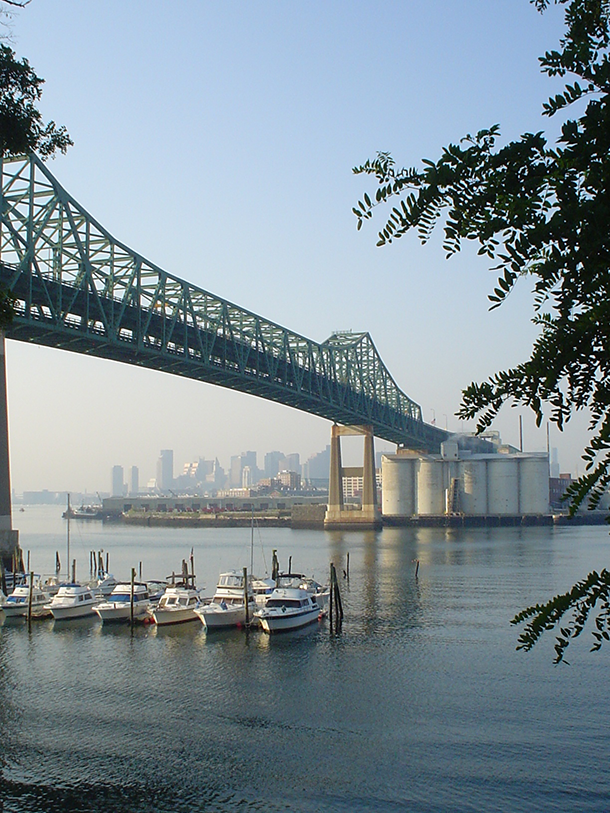
The Tobin Bridge spans the Mystic River just north of Boston, Massachusetts. (Photo: Michael Femia, Flickr CC BY-NC-ND 2.0)
CURWOOD: The Mystic River that empties into Boston Harbor is a polluted nightmare, that rarely earns more than a D on the federal government’s annual water quality report card. And now a regional advocacy group, the Conservation Law Foundation, is going after one of the wealthiest alleged polluters of the Mystic River, the ExxonMobil Corporation. In addition to claiming Exxon leaks toxic chemicals from a storage facility in Everett along the Mystic, CLF says the oil giant has failed to prepare for sea level rise and storm surges related to climate change. Bradley Campbell is President of the Conservation Law Foundation and I visited him in his downtown Boston office. Welcome to Living on Earth, Brad.
CAMPBELL: Thank you.
CURWOOD: Now, you filed a notice of intent. Take me to law school here. Why don’t you just sue Exxon?
CAMPBELL: The federal environmental laws provide for citizens suits, for citizens to enforce the law, but they also insist that we provide advance notice to the companies before we sue them and also to the Justice Department and the EPA and sometimes the federal agencies use that notice to come in and take over the case, often to protect the companies from aggressive enforcement. We don't think that'll happen in this case. We think the Obama administration will not essentially want to protect Exxon Mobil, but we still have to go through the process of providing notice of the suit, but we will promptly file at the end of the 60 day Clean Water Act notice period.
CURWOOD: A number of states attorneys general are investigating Exxon Mobil for its alleged role in sowing climate denial and allegedly misleading investors and the public about the risks of climate change. Why is the failure to prepare for climate change at this site, that you're accusing Exxon of, different?

The Conservation Law Foundation says that storm surge could release toxic chemicals from ExxonMobil’s Everett site into the Mystic River. (Photo: Phil Romans, Flickr CC BY-NC-ND 2.0)
CAMPBELL: Well, the attorneys general are looking really at the tools that prosecutors have in terms of the securities laws, in terms of the racketeering laws. We're looking more narrowly at the requirements of environmental laws, particularly the Clean Water Act. In essence facilities like this have to certify to the EPA on a regular basis, in sworn statements, that they've done everything they can in their professional engineering judgment to avoid an unintended release of oil or hazardous substances. This facility is in constant violation of its permits, so obviously they're not meeting the test even in day-to-day conditions, and we're not talking about trivial violations. We're talking about significant, tenfold exceedances of their permit, in many cases of very potent carcinogens, right in the heart of densely populated communities. In the case of a category one storm it would essentially be inundated, tanks would likely collapse, and there would be oil and hazardous-waste not just throughout these communities, but also throughout the Boston Harbor complex, and so we see this as a bread-and-butter case under the Clean Water Act where they're saying, “This facility’s ready for the impacts, we know are ahead,” when in fact it isn't.
CURWOOD: Talk to me about some of toxins that are coming out of this facility.
CAMPBELL: Obviously, you'll have many different forms of petrochemicals, oil gasoline and the like. It's a toxic soup of various carcinogens like benzene and others that have obviously significant human health impacts, but also need to be controlled. And what we learned in our investigation is that Exxon Mobil, this facility, has a treatment system that is overwhelmed whenever you have a significant rainfall. So we have videotape of their discharge point with oily sheen coming out of it on a regular basis.
CURWOOD: So to what extent does your lawsuit hinge on the finding the Exxon knew about the risks of climate change and therefore there will be rising season seas that can affect these tanks.
CAMPBELL: Well, thanks to a number of investigations, we know that Exxon has known, and its scientists confirmed as early as the Nixon administration that climate impacts were real, that they were potentially catastrophic, and that they were linked to carbon dioxide and other greenhouse gas emissions. But even as Exxon Mobil designed their market strategy, designed their high-end infrastructure, like oil platforms, to withstand climate change impacts like rising seas, more intense storm events, they left facilities that were in the heart of communities very vulnerable.

ExxonMobil uses its Everett Terminal in Massachusetts for storing and transferring oil, gasoline, diesel, and jet fuel. (Photo: Mike Mozart, Flickr CC BY 2.0)
CURWOOD: Brad, you're saying that Exxon hasn't adequately prepared for the effects of climate disruption of this particular site. To what extent might there be many other industrial facilities that are similarly ill-prepared, and which of those operators by the way knew about climate change way back when?
CAMPBELL: There are a number of facilities that we're investigating in this region and beyond that present the same threat to communities. They’re low lying, they’re on the coast, and they're vulnerable, and in many cases there’re densely populated communities surrounding them and as you might expect those communities tend to be lower income communities and committees of color that have always gotten short shrift from the regulators and enforcers. We think that there are many other companies that are situated similarly to Exxon, but Exxon's climate deceit has been the most egregious. They are not just deceiving the public in terms of political debate to avoid regulation. They're also deceiving both the public and the regulators, to whom they're regularly submitting false statements, about the risks that are immediate to families and businesses that have hosted these facilities for generations.
CURWOOD: Why in your view have the regulatory agencies not called Exxon to account if, in fact, as you are saying, right now they’re violating the Clean Water Act?
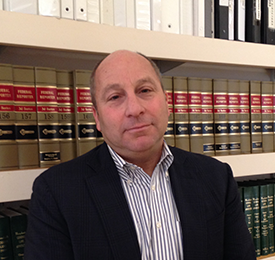
Bradley Campbell is the President of the Conservation Law Foundation, based in Boston. (Photo: Jenni Doering)
CAMPBELL: There are a couple of factors I think in play. One is that, as compared to water bodies that are in more affluent communities, like the Charles River, the Mystic River has been underserved by the regulators and enforcers. The second factor that I think is important for this case is that EPA really has not itself caught up with the implications of climate change, in terms of how it administers the Clean Water Act, and so when they look at a certification as to whether a facility is ready, they like many in the regulating community still look back to, “Well, what were the historic conditions that this facility has to be ready for?” And our view, as both the law and common sense dictate, that a facility should be ready for the conditions that lie ahead and not just the conditions that lay behind us because we know from climate science that the conditions ahead are going to be very different, and they're going to be much harsher.
CURWOOD: Brad Campbell is President of the Conservation Law Foundation. Thanks so much for taking the time today.
CAMPBELL: Thank you for your interest in this issue.
CURWOOD: We contacted Exxon-Mobil for comment. Its statement is posted in full on our website LOE.org. And it reads, in part, “Operations at the Everett terminal comply with federal and state government environmental standards, including monitoring and treatment of ground water.”
Full ExxonMobil statement on the Conservation Law Foundation’s forthcoming lawsuit:
"The Conservation Law Foundation’s lawsuit is part of a well-publicized coordinated assault on ExxonMobil’s reputation that is underpinned by deliberately inaccurate reporting on our nearly 40 years of publicly conducted climate research. The organization is funded by extreme anti-oil and gas activists, including the Rockefeller Brothers Fund.
To suggest that we had reached definitive conclusions, decades before the world’s experts and while climate science was in an early stage of development, is not credible.
ExxonMobil believes the risk of climate change is clear and warrants action. We are taking action by reducing greenhouse gas emissions in our operations, helping consumers reduce their emissions, supporting research and participating in constructive dialogue on policy options.
Operations at the Everett terminal comply with federal and state government environmental standards, including monitoring and treatment of ground water. The U.S. Environmental Protection Agency and Massachusetts Dept. of Environmental Protection recently inspected the Everett terminal as part of a Storm Water Pollution Prevention Plan review and found no issues with compliance or cause for concern. ExxonMobil takes its environmental responsibilities seriously and continues to perform work at our facility to minimize environmental impacts.
Our facilities are designed, constructed and operated to withstand a variety of extreme climactic and other conditions, with safety factors being built in to cover a number of engineering uncertainties, which cover those associated with potential climate change impacts. We continue to engage with major engineering societies, international organizations and industry groups to develop sound engineering perspectives on managing the risks of extreme weather."
Related links:
- Conservation Law Foundation on its forthcoming ExxonMobil suit
- Read the Notice of Violations and Intent to File Suit
- InsideClimate News: “Exxon’s Legal Woes Over Climate Change Just Got a New Twist”
- Listen to an earlier Living on Earth interview, “Exxon Denied its Own Climate Research”
- About CLF President Brad Campbell
[MUSIC: Pink Martini, “Shchedryk (Ukranian Bell Carol)”, Joy To the World, Mikola Dmytrovych Leontovych, Heinz Records]
CURWOOD: Just ahead...climate activists win a key case in the highest court in Massachusetts. Stay tuned to Living on Earth.
ANNOUNCER: Support for Living on Earth comes from the Gordon and Betty Moore Foundation, and from Wunder Capital, an online investment platform that allows individuals to invest in solar projects across the U.S. More information and account creation at Wunder Capital.com. That's Wunder with a 'U'. Wunder Capital. Do well and do good.
[CUTAWAY MUSIC: Harvey Reid, “Wayfaring Stranger,” Dreamer or Believer, traditional Appalachian, Woodpecker Records]
Kids Win Another Landmark Climate Ruling

Much of the New England coastline would be inundated if the Greenland and Antarctic ice sheets were to melt. (Photo: Kevin Gill, Flickr CC BY-SA 2.0)
CURWOOD: It’s Living on Earth, I’m Steve Curwood. More and more youthful plaintiffs are suing governments in the US for failing to safeguard the climate and their future - and sometimes winning. The Massachusetts Supreme Judicial Court recently ruled in favor of four young people who said the state had failed to follow through on laws that require reduction of greenhouse gas emissions, and ordered it to get going. We turn back now to Brad Campbell, the President of the Conservation Law Foundation, one of the organizations involved. I asked him why this case is so significant.
CAMPBELL: This is a landmark decision requiring economy-wide mandatory and declining carbon emissions limits. Massachusetts has one of the most progressive greenhouse gas limit laws in the country, and yet, beginning with the prior governor, the agency simply refused to issue the regulations to implement that law according to its terms and to impose declining emissions caps across a range of sectors.
CURWOOD: This is the law.

The John Adams Courthouse in Boston hosts the Massachusetts Supreme Judicial Court. (Photo: Emmanuel Huybrechts, Flickr CC BY 2.0)
CAMPBELL: This is the law, and we were of the view that the law was very clear. We got a lot of push back. Essentially, the agency tried to cite a bunch of unrelated regulations, that they said constituted compliance with the law, at least one of which was done before the law was even enacted, and the Supreme Judicial Court agreed with us that the law is mandatory, it's not just aspirational, not a suggestion or guidance. This is another example where the courts have stepped in to make clear that carbon dioxide, greenhouse gases, are a pollutant and a form of pollution that presents an immediate threat to public health and the environment and one that has to be regulated, in this case, through declining emissions caps across the economy.
CURWOOD: So give me some numbers here. How far short of the 2050 goal that's in this law, cutting greenhouse gas emissions, is the Commonwealth of Massachusetts? Why are they in violation of the law?
CAMPBELL: Well, depending on whose numbers you believe, we’re somewhere between 18 and 25 percent off target, and we tended to not use the word "goals" because they really are essentially mandatory rather than aspirational. At the same time that we think we're off track and falling short on emissions reductions right now, the technology is available, and the solutions are essentially in reach to get back on track quickly and reach those goals.

The Massachusetts Department of Environmental Protection (MassDEP) encourages clean energy, such as here at the Shaffer Landfill. But the CLF says the MassDEP has not done enough to fulfill a law requiring the reduction of greenhouse gas emissions in the state. (Photo: Massachusetts Dept. of Environmental Protection, Flickr CC BY 2.0)
CURWOOD: How significant is it that the Massachusetts High Court was unanimous? All seven justices ruled in favor of your position.
CAMPBELL: I think it's very significant. It removes any doubt about what the statute required, and it really removes any kind of partisan quality to the decision. The decision was written by the most conservative justice on the court, one for example who dissented on marriage equality, so it's a decision that, I think, will bring all sides together on the need to find common sense solutions that meet the statutory mandate, and I think it's both remarkable and welcome that the current governor of Massachusetts, Charlie Baker, his administration has embraced the decision and has indicated that they're willing to work with the environmental community on finding a good approach.
CURWOOD: Now, some of the pushback involving your case involves the closing of the Pilgrim nuclear power plant. There are many risks of course with the nuclear power plant, but one of them is not a lot of carbon dioxide.

Under conservative projections of sea-level rise, the Plum Island Estuary off the coast of northeast Massachusetts would be submerged. (Photo: Matthew Kirwan / USGS, Flickr public domain)
CAMPBELL: There's no doubt that the closing of Pilgrim and other nuclear plants in the region present an additional challenge in terms of our need for low or zero carbon energy, but there've been numerous analyses to show that we can stay on track even with the closure of the Pilgrim nuclear power plant and others, that the technology and the ability through a smarter grid, renewable energy, demand reduction, that the tools are available to us right now to get back on track to a low carbon future.
CURWOOD: Where else in the US are there strong state laws regarding action on climate that, well, might also be vulnerable to lawsuits similar to the one that you succeeded in, here in Massachusetts?
CAMPBELL: CLF has a similar suit currently pending in Rhode Island, which has another global warming solutions type act in play and where they're attempting to permit a new gas-fired power plant, and that's typical of the proposals we've seen across New England. It’s really an effort by big coal and big oil to simply shift us from an addiction to one fossil fuel to another. If we're ever going to achieve the climate goals that were articulated in Paris, articulated in state statutes in Massachusetts and Rhode Island, or the climate goals that we need simply to maintain a hospitable environment for our children, we can only do that if we say “no” to this new generation of fossil fuel infrastructure and keep on pace to a cleaner energy platform.
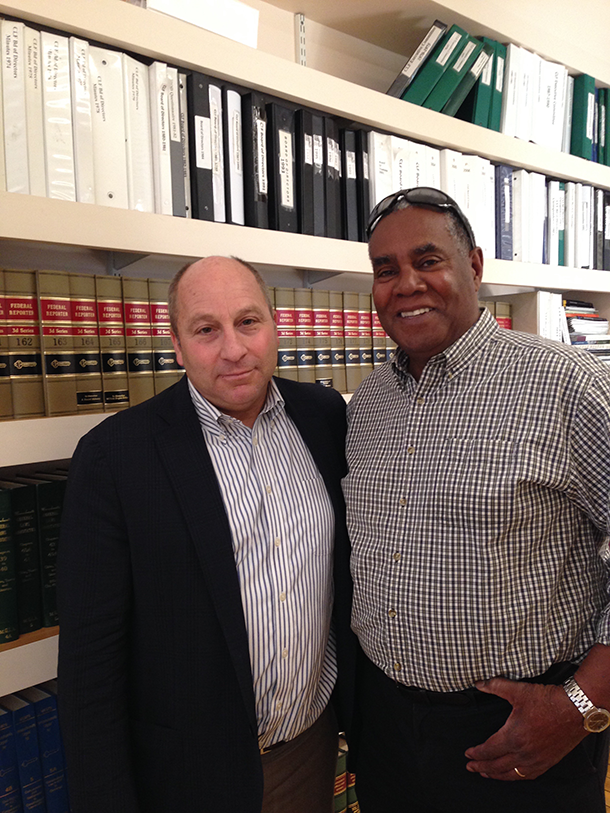
Brad Campbell, left, and host Steve Curwood at the Conservation Law Foundation’s office in downtown Boston, Massachusetts. (Photo: Jenni Doering)
CURWOOD: California also has a very strong climate program, AB 32, for folks who want to be technical. What vulnerability there do you see for legal action?
CAMPBELL: California has made great progress and does not have the same challenge in terms of agencies dragging their feet or even industry resisting so much the need to reduce carbon and other greenhouse gas emissions. California is proceeding with decarbonizing its economy and demonstrating that you can do that and still have one of the most robust economies in the world. In the New England region and another parts of United States, the challenge is that you have multiple states that are essentially on the same energy grid and that don't have unitary laws, so it's a tougher challenge because you have to coordinate more states, you have to coordinate more regulatory bodies, to get them on the same page.
CURWOOD: Brad Campbell of the Conservation Law Foundation.
The Massachusetts Department of Environmental Protection says that the state “remains committed to meeting the Global Warming Solutions Act goal of reducing greenhouse gas emissions by 25 percent below 1990 levels by 2020, as well as achieving greater reductions for 2030 and beyond.”
Related links:
- Conservation Law Foundation on its win in Massachusetts climate lawsuit
- The Massachusetts Supreme Judicial Court decision
- About CLF President Brad Campbell
[MUSIC: The Oscar Petersen Trio with Clark Terry, “Mack the Knife,” Walkman Jazz: Oscar Petersen, Kurt Weill/Bertolt Brecht/Marc Blitzstein, Polygram Classics and Jazz/Mercury]
Saving the Bay Area

Much of San Francisco Bay used to look like the small wetlands in Alviso (Photo: Emmett Fitzgerald)
CURWOOD: So much global warming is already inevitable even if emissions are cut, that we will have to adapt to its effects, including rising sea levels. In some places that will mean sea walls and levees, but many urban planners think that restoring the tidal wetland ecosystems that once buffered many cities could be a smart way to keep them above water. In the San Francisco Bay Area this June, voters will have a chance to fund wetland restoration throughout the region through a ballot initiative called Measure AA. Living on Earth’s Emmett FitzGerald has our story.
FITZGERALD: The Bay Area isn’t as vulnerable to sea level rise as east coast cities like Boston and Miami, but there are plenty of people who are concerned.
HILL: Well, we don’t have the worst situation, but we can expect to have 4-6 feet of sea level rise over the next, I keep saying 100 years, but it’s more like the next 85.
FITZGERALD: Kristina Hill looks out at the San Francisco Bay from Caesar Chavez Park along the shore in Berkeley. She’s teaches landscape architecture at the University of California.
HILL: And my specialization is in how we adapt to sea level rise, particularly in estuary environments like this one.
FITZGERALD: Kristina says a lot of people’s knee-jerk reaction to sea level rise is to build a wall to keep the ocean out. She was recently a guest on a call-in radio show in San Francisco.

The cities of the Bay Area have a lot of waterfront, making them vulnerable to sea-level-rise (Photo: Besopha, Flickr CC-BY-2.0)
HILL: People who called in all wanted to build a barrier at the San Francisco Bay, under the Golden Gate Bridge. And it’s 400 feet deep there! And the amount of water that comes in and out the Golden Gate in the tidal exchange is like three Mississippi Rivers. It’s a huge amount of water, so it would be like the Hoover Dam under the Golden Gate bridge. It’s a bad idea for a million reasons.
FITZGERALD: Sea walls do have a role to play in coastal adaptation, but they’re expensive, ugly, and they can’t be adjusted to changing conditions.
HILL: What I try to do is help people go beyond that idea of the wall.
FITZGERALD: Kristina wants cities to build what she calls a cyborg edge, mechanical infrastructure blended with a living zone made up of sand bars and marshes. Scientific research shows that wetlands can help protect cities from the sea by reducing the height of waves.
HILL: And they’ve shown that as little as 200 feet of wetland verge can reduce wave height before those waves hit the dry land. So that means less flooding, and that means a lower levee has to be built. Some kind of earthen berms will have to be a part of the system, but they can be lower and cheaper if we do the wetlands.

Before the salt ponds reduced the flow of water, Alviso used to be a big fishing port (Photo: Emmett Fitzgerald)
FITZGERALD: In the Southern portion of the San Francisco Bay, wetland restoration is already underway.
[TRAIN]
FITZGERALD Commuter trains pass right by the Alviso Marina County Park, a small marsh in the heart of Silicon Valley. John Bourgeois is the executive project manager for the California Coastal Conservancy’s South Bay Salt Pond Restoration Project. Standing on a wooden boardwalk in the park, surrounded by reeds and birds, he explains that all of San Francisco Bay used to look like this.
BOURGEOIS: So we’re standing next to a brackish water marsh at the far southern tip of San Francisco Bay. The size of this small marsh is pretty typical of what’s left of wetlands in San Francisco bay. We’ve lost about 85 to 90% of the tidal marshes.
FITZGERALD Some of those marshes were paved over for coastal development. Others were filled in for agriculture, but a lot of tidal marshes were turned into salt evaporation ponds. It all began way back in the 1850s during the Gold Rush.

John Bourgeois from the South Bay Salt Pond Restoration Project (Photo: Emmett Fitzgerald)
BOURGEOIS: And little mom and pop salt making operations would come around, and they would levee off areas of wetland, flood them up, and evaporate the water to concentrate the salts and then harvest the salts, and that became bigger and bigger industry, to where the south bay and north bay in particular are now dominated by this salt pond landscape, and it accounted for quite a bit of wetland loss.
FITZGERALD: Unlike a parking lot, a salt pond can be deconstructed and turned back into a marsh. In 2003 the government secured rights to 15,000 acres of former salt ponds in the South Bay from companies like Cargill.
BOURGEOIS: And we’ve been returning these salt ponds, these industrial salt evaporation ponds, back into tidal marshes and other wetland habitats for the benefit of flood protection, public access, and of course habitat.
[MARSH WREN]
FITZGERALD: When the project started it was really focused on restoring habitat for wildlife. The wetlands are home to many bird species like this marsh wren.
[MARSH WREN]
But sea level rise has given a new, human urgency to John’s work.
[FOOTSTEPS]
FITZGERALD: A couple hundred yards down the shoreline, an earthen berm is all that protects a low-income neighborhood in Alviso from the water. The town is actually below sea level. Before the tech boom, this part of Silicon Valley was mostly orchards. But over the years farmers over-pumped the groundwater for irrigation, and it actually caused the land to subside – 15 feet in places.
BOURGEOIS: This is a mini New Orleans situation. We’re standing on a levee where we’ve got the bay on one side and a very subsided community on the other side, and if it wasn’t for this levy these people would flood, and they have flooded. There are people who show up to my meetings whose homes have flooded three times in their lifetimes, and so we’re really committed to making sure we, in addition to the habitat values , we really want to provide protection for them.
FITZGERALD: Standing on top of the levee looking out at the bay, there’s just a strip of marsh about 25 yards wide, and after that it’s just open water.

A barren stretch of salt pond (Photo: Emmett Fitzgerald)
BOURGEOIS: All of the open water you’re seeing here are salt ponds. All of this used to be marsh. So you can imagine, if you look across that vast area, if all of that were a wetland and were acting as a giant sponge to absorb those storm waters, you can really kind of imagine the effect of that from these storm events, of how much buffering that would provide for the community.
FITZGERALD: Turning that barren salt pond into a productive marsh is a complicated process, but John says they try to let nature do the heavy lifting.
BOURGEOIS: We undo what the salt companies did years ago. We take down the levees. We restore the hydrology back into the old remnant channels, and we let the natural processes of the bay take-over.
FITZGERALD: But John admits it’s not quite as simple as just getting out of nature’s way. In the 150 years since the salt ponds were established, birds like the Western Snowy Plover have grown to like the salt ponds. The plover is a threatened species, and John says they need to ensure that it still has habitat.
BOURGEOIS: So we’ve got this mix of large scale, natural marsh restoration and these more, kind of intensive, more engineered, more designed areas where we’re trying to maximize the habitat for the birds that actually liked the salt ponds.
FITZGERALD: It’s a difficult job but they’re making good progress. So far, John and his team have completed work on 3,700 acres of former wetlands in the South Bay, about 25 percent of their ultimate goal. The biggest obstacle right now is finding a consistent source of funding. So far they’ve depended on a jumble of small grants from the federal and state government, but that could soon change. In early June, Bay Area residents will vote on measure AA, a so-called parcel tax, where every landowner pays a small fee for their parcel of land with cash going to fund wetland restoration throughout the Bay Area. Where exactly that money would go has yet to be determined, but The Salt Pond Restoration Project is exactly the kind of initiative the tax is supposed to fund.

This earthen berm protects the subsided city of Alviso from the Bay (Photo: Emmett Fitzgerald)
BOURGEOIS: Measure AA does have an expenditure plan with examples of projects that could be funded, and clearly we fit within their realm and, we would most definitely be applying for those funds if and when they become available.
FITZGERALD: One of the primary sponsors of measure AA is the environmental organization Save the Bay, so I headed to its offices in Downtown Oakland.
[ELEVATOR]
FITZGERALD: Save the Bay is on the 18th floor, and from director David Lewis’ windows you can see all the way to San Francisco.
[SOUND OF SHADE GOING UP]
LEWIS: It is very nice to be able to see the Bay.
FITZGERALD: David says that measure AA would raise roughly $25 million a year over the next 20 years, and that money would go a long way to restoring the coastal wetlands.
LEWIS: So we think this measure alone could accomplish 15- to 20,000 acres of tidal marsh restoration over its 20-year lifespan and leverage additional federal and state matching funds to help us complete the work.
FITZGERALD: Under measure AA all property owners in the nine counties that touch the Bay would have to pay $12 a year for tidal marsh restoration. Given the many benefits of wetlands, David says $12 is a small price to pay.
LEWIS: Everybody who owns a parcel of land can afford a dollar a month to help make the Bay healthier and help make our community stronger and more resilient for decades to come.
FITZGERALD: But not everyone in the environmental community thinks the proposed tax is fair. Brian Beveridge is the co-director of the West Oakland Environmental Indicators project, an environmental justice organization based in West Oakland, a mostly low-income neighborhood beside Oakland’s port. Brian says that parcel taxes like measure AA are notoriously regressive. A working class homeowner in West Oakland will pay the same amount of money as a giant tech company in Silicon Valley.
BEVERIDGE: I don’t think we can take it so casually to say, well, it’s only $12 and say that this has no meaning. If we’re going to stop doing regressive taxes at some point we actually have to stop doing them.
FITZGERALD: Brian is all for restoring the bay, but he says the public shouldn’t have to pay for it.

San Francisco salt ponds from the air (Photo: Matt Hintsa, Flickr CC BY-NC-ND 2.0)
BEVERIDGE: The very people who lost their shoreline in the first place, which is the public, are now being asked to pay to get it back. And we do this consistently. We ask, essentially we ask the victims of a wrong to pony up and pay to fix it.
FITZGERALD: Brian works to reduce the impacts of pollution on people living in West Oakland, and his organization follows the “polluter pays” principle, which says the company or organization that caused environmental damage should be the one that pays to clean it up.
BEVERIDGE: So if it was this great expansion of private development along the shoreline that caused the problem in the first place, maybe we should go back to the private sector and say hey, you know, the chickens have come home to roost.
FITZGERALD: Getting companies to pay for wetland restoration is not a totally new idea. In Louisiana, environmental groups have brought lawsuits to try to force oil and gas companies to pay for the restoration of coastal wetlands that they helped to destroy. Those lawsuits are currently stuck in the courts facing fierce opposition from the industry. But there hasn’t been a lawsuit in the Bay Area, and landscape architect Kristina Hill says the government needs to find these funds as quickly as possible if it wants to avoid the worst effects of sea level rise.
HILL: I mean it’s an accelerated problem. We have to work harder, we have to start sooner. Measure AA has to pass. We have to do the things we can do today to be able to get ready for four to six feet.
 Kristina Hill (Photo: UC Berkeley)
Kristina Hill (Photo: UC Berkeley)
FITZGERALD: Wetlands need time to develop, but, if you get them in place early enough, they could actually grow and keep pace with sea level rise. Kristina says that investing in ecosystems that will cut the costs of rising seas down the road is just smart economic policy. The longer we wait, the more adaptation is going to cost.
HILL: That’s why I try to emphasize to everybody, we’ve gotta spend the money now. We gotta borrow now, and we gotta spend now because, if we wait until there’s disaster all around the world all at once, money is going to be very expensive to borrow, and materials are going to be very much in short supply.
FITZGERALD: If we fail to get ahead of the problem, she says, future generations are going to be stuck shouldering much larger costs.
HILL: They won’t have the benefits. They’ll have all the costs, and they’ll have all the impacts, and I think that’s an intergenerational kind of inequality that we really should own up to.
FITZGERALD: If Measure AA passes it will be the first time that a major metropolitan area has voted to spend taxpayer money to prepare for sea level rise. With so many US cities along the coast and vulnerable to rising seas, it could be a model for the future.
For Living on Earth, this is Emmett Fitzgerald in the San Francisco Bay Area.
Related links:
- South Bay Salt Pond Restoration Project
- Read an interview with Kristina Hill on architecture, urban design, and sea level rise
- Save the Bay
- West Oakland Environmental Indicators Project
[MUSIC: Dudu Maia, “Na Baixa Do Sapateiro,” Dudu Maia, Ary Barroso, Delira Musica]
CURWOOD: Coming up...how one part of the solar boom went bust. That's just ahead on Living on Earth. Stay tuned.
ANNOUNCER: Funding for Living on Earth comes from United Technologies, a provider to the aerospace and building systems industries worldwide. UTC Building & Industrial Systems provides building technologies and supplies container refrigeration systems that transport and preserve food and medicine with brands such as Otis, Carrier, Chubb, Edwards and Kidde. This is PRI, Public Radio International.
[CUTAWAY MUSIC: Childsplay, “Liam Childs/Balkin’ Balkan/E-B-E Reel,” Waiting for the Dawn, Liz Carroll, Childsplay Records]
SunEdison Falters; Solar Still Sunny

A SunEdison, Inc. engineer installs a solar panel array (Photo: IIP Photo Archive / U.S. Department of Energy, Flickr CC BY-NC 2.0)
CURWOOD: It's Living on Earth, I'm Steve Curwood. In early May, the US reached a new milestone for solar energy: There are now one million solar installations across the country. Solar energy is booming, yet one of the biggest companies seems to be on the rocks. Solar behemoth SunEdison recently filed for Chapter 11 bankruptcy protection, and we called up Nat Kreamer, the president and CEO of Spruce Finance, to ask what went wrong. Nat, welcome to Living on Earth.
KREAMER: Thank you, thanks for having me.
CURWOOD: Nat, you know, just a year ago so, SunEdison seemed to be thriving. I understand it was the largest solar company here in the United States?
KREAMER: That's correct. SunEdison was the largest solar company in United States and was also operating globally.
CURWOOD: So what happened to the company? They’ve filed for Chapter 11 bankruptcy protection. What went wrong?
KREAMER: The fundamentals of the US solar market are incredibly strong. The truth is that SunEdison grew too fast. It fueled that growth with debt, and it didn't make enough money on what it was selling to customers.
CURWOOD: Who are SunEdison's customers?
KREAMER: Well, largely SunEdison's customers were either companies that were buying solar electricity from systems that were located at their businesses or SunEdison was developing large-scale projects in the wholesale power market, and those projects would sell their solar electricity into the wholesale power market and then utilities would buy that power.
CURWOOD: Let's break this down a little bit. Now, the wonderful thing about solar is that, once you buy the array and the associated equipment, you essentially have no fuel costs, a little bit of maintenance, but not much. That means a lot of money upfront. How did that affect SunEdison?

Nat Kreamer says that SunEdison’s financial woes were the result of its growing too quickly, and the solar industry as a whole is booming. (Photo: Randy Montoya / Sandia Labs, Flickr CC BY-NC-ND 2.0)
KREAMER: Well, you have to finance it and so, SunEdison like all companies that are financing power projects, need to use equity, meaning their own money and then either raise additional equity from new investors and/or raise debt and borrow against the future cash flows coming from that power project. If you look at what SunEdison did, is it spun off its power assets into other public companies, Terraform and Terraform Global. Those companies owned the power assets and were able to generate the cash flows from those power assets, so they were selling electrons and were able to raise equity and raise debt. Those two companies are actually doing well. They're providing a return to their investors and their operating the market.
SunEdison, when it sold off those assets and basically spun them out to other investors was left with the development business, and that development business was looking for projects of sort of selling projects if you well, and it was holding a lot of debt at the same time, and if you take on too much debt just like an average person taking on too much debt, eventually you run out of money and you go bankrupt. That has not been true for many, many other solar companies in the United States, and in fact that industry at large is quite healthy and has been growing in the double digits. You see many successful solar companies, especially ones that are publicly traded like SunPower or FirstSolar, who have operated consistently and profitably during the same period of time.
CURWOOD: People listening to us might think, “Hey, this sounds like the Solyndra problem of five years ago”. What makes this bankruptcy different?
KREAMER: What's really entirely different is Solyndra attempted to create a new type of solar technology that it believed would be lower cost than the type of solar technology that is generally used by the industry today and that most Americans are familiar with because they've probably owned a solar power calculator at some point in their life. Solyndra bet that its technology would drive down cost faster than the cost fell for the fundamental technology that we use, and Solyndra was wrong. But that didn't really have any bearing on what happened in general with US solar industry. In fact, solar became more competitive and because it became more competitive and created more value for end customers and for the American public at large Solyndra didn't have a business. What happened here is that SunEdison used that proven technology that had become lower cost and started investing in a lot of systems. They just grew way faster than their organic capital could support, and they borrowed too much money, and so it's really a story of overleverage as opposed to a bad technology bet.

As photovoltaic panel technology has improved over the last few years, solar energy costs have dropped dramatically. (Photo: Michael Mazengarb, Flickr CC BY-NC 2.0)
CURWOOD: Let's talk generally about the solar business. How do we deal with the fact that there's many utilities that have become somewhat reluctant to accept small-scale residential solar on the grid?
KREAMER: So, as the CEO of Spruce Finance, our corporate equity investors include five of the ten largest utilities in the United States. And what that tells you, because we're in the business of providing financing to consumers to put residential solar systems on the roof, is there are many of the leading utilities that see residential solar as a fantastic growth opportunity and have invested in the company that I run. There are some utilities in United States, notably in California and now in New York, where the utility is compensated for running the grid and, in fact, they have an incentive to get more people to use their grid, so they're excited about more distributed solar. They're excited about electric cars and charging stations and storage. There are other utilities who view residential solar, or distributed solar more generally, as a threat to their business model. It's because they view it as a competition for being able to sell the end customer electrons. So either the utility is going to sell you the electricity or a distributed solar company is going to sell the electricity. And so the utility in some instances in some markets have tried to take actions to basically slow down or stop the market for distributed solar.
CURWOOD: Nat, to what extent is some of the utility opposition a stalking horse for the fossil fuel industry?
KREAMER: Well, there's definitely an entrenched interest. If you look at what's happened in the United States, natural gas, solar, and wind are being developed more and more. Coal is being used less and less, so you're seeing investors and owners of coal and coal-fired power plants have a smaller customer base and see their market eroded, and naturally they look at the natural gas industry and the solar industry and the wind industry, and say, “Those companies are taking my revenues.”
CURWOOD: What needs to happen to deploy solar energy at the rates that we need here in United States?
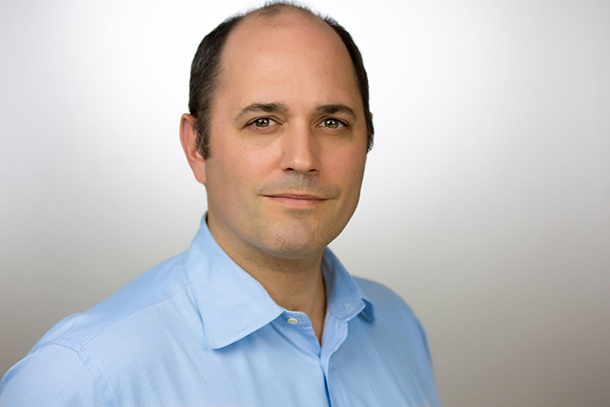
Nat Kreamer is the President and CEO of Spruce Finance, a solar energy financing company. (Photo: Spruce Finance)
KREAMER: Well, we have great fundamental long-term federal policy that is going to support the investment in solar to keep driving down the cost of solar so that it becomes attractive in more and more states in the United States. We have fundamentally a strong financing industry in the capital markets to finance the investment in solar projects. We have great technology and innovation both in terms of a Department of Energy research, fundamental research for long-term growth, as well as for corporate research which is innovating every day. Where we find challenge is local policy that's happening at the state level. In some markets you have a utility whose...the way to get compensated gives them an incentive to bring more renewable energy, specifically solar, onto their grid. In other markets the way to get compensated gives them an incentive to resist getting more solar energy, and so we need to resolve that conversation so that we are able to deploy more residential, commercial, and utility scale solar in the United States.
CURWOOD: Nat Kreamer is the President and CEO of Spruce Finance and Chairman of the Board of Directors of the National Solar Energy Industries Association. Nat, thanks so much for taking the time with us today.
KREAMER: Thank you all for taking the interest.
Related links:
- The Wall Street Journal: “SunEdison Files for Chapter 11 Bankruptcy Protection”
- The Wall Street Journal: “Inside the Fall of SunEdison, Once a Darling of the Clean-Energy World”
- About Nat Kreamer
[MUSIC: David Sanborn, “Ain’t No Sunshine When She’s Gone,” Inside, Bill Withers, Elektra]
Beyond the Headlines
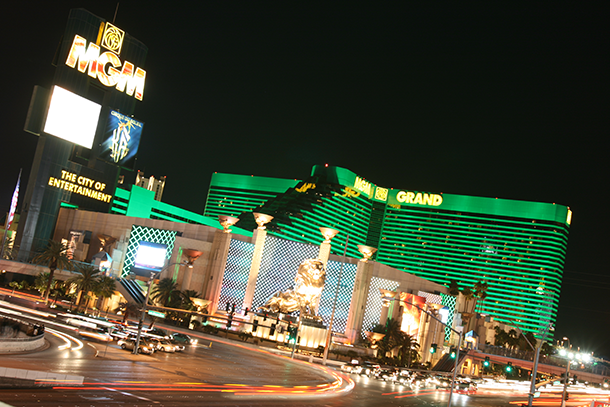
MGM Resorts is the biggest power user in Nevada (Photo: CC BY-NC-ND 2.0)
CURWOOD: Off to Conyers, Georgia now to check in with Peter Dykstra. He’s with DailyClimate.org, and Environmental Health News, EHN.org, and he’s been digging beyond the headlines for us. Hi, there, Peter.
DYKSTRA: Hi, Steve. There’s a story brewing out in Nevada that could be a preview of how electricity is bought and sold everywhere. Last week, the state’s largest single electricity buyer filed for a Vegas-style divorce from Nevada Power, the state’s electric utility.
CURWOOD: OK, Peter, tell me what’s a “Vegas-style divorce” when it comes to a power company?
DYKSTRA: Well first, the story gets more interesting when you learn that the biggest power user in Nevada is the giant casino operator MGM Resorts. They announced their intention to quit buying their juice from Nevada Power and seek better rates on the open market. The state requires MGM to pay an exit fee of almost $87 million for the privilege of shopping the grid to ship cheaper electricity into Las Vegas.
CURWOOD: Ouch, that’s a lot of alimony, or maybe in this case it’s child support. In any event, what does this mean for renewables possibly?
DYKSTRA: Well, an MGM executive named John McManus said the company wants to reduce its environmental impact and aggressively pursue renewables because, as you well know Steve, nothing says “Mother Earth” more convincingly than ginormous flashing signs and fountains and golf courses in the desert.
CURWOOD: Well, in all those signs if they’re using solar power, they can do it guilt free. In any event, Peter, I gather that power’s cheaper on the open market at this point, but what’s the risk that they might go to coal?
DYKSTRA: Well, right now Nevada uses very little coal, almost none. Nevada’s power comes mostly from natural gas. But let’s talk more about Nevada and solar power. You’ll recall that several months ago, the state Public Utility Commission - the same guys who are charging the $87 million exit fee - tripled the fees for installing rooftop power on homes, and they reduced the fees that utilities pay back to homeowners for the excess rooftop power they send back to the grid.
CURWOOD: Well, that kind of effectively killed rooftop solar in the state of Nevada, I think.
DYKSTRA: It sure did, for now. But there’s a move afoot for a statewide referendum on the fees on rooftop solar on the November ballot. And one more little jolt about Nevada and electricity….
CURWOOD: Oh? What’s that?

A Nevada solar installation (Photo: CC BY 2.0)
DYKSTRA: Nevada typically gets about three or four percent of its juice from hydro power, notably Lake Mead and the Hoover Dam, but climate change and years of both drought and high water consumption have some experts convinced that Lake Mead could conceivably dry up at some point.
CURWOOD: Yah, I think it’s not a matter of if, but when. Hey, what else do you have for us today?
DYKSTRA: I’ve got more solar! You know what the first thing anybody does when they go onto Google Earth for the first time?
CURWOOD: Well, when I did I looked for my own house.
DYKSTRA: Absolutely. Me too. Now Google has a program called Project Sunroof that allows you to look at your own house and determine whether it’s suitable for solar panels. The program launched last August. It’s now available in 42 states and for 43 million rooftops. You type in your address, and Google crunches data on shade, local climate, and other variables. You’ll get info on how well rooftop solar would do on your home as well as information on installation options and financing.
CURWOOD: And Peter, I imagine as a diligent reporter you looked up your own house?
DYKSTRA: Of course I did, and it told me that I’m not one of the 43 million homes available yet, and neither are four of the other places I’ve lived, but I looked up a random address in California and here’s what I got: Info on average sunlight amounts, square footage on the roof where panels could fit, and how much savings there would be on electric bills over 20 years. Now, I’m going to be curious to see the results when Project Sunroof makes it here to Conyers,Georgia, where my residence is completely surrounded by 60-foot yellow pine trees.
CURWOOD: I guess you’re probably not in the best place to start for solar. Hey, what do you have for us this week from the history archives?
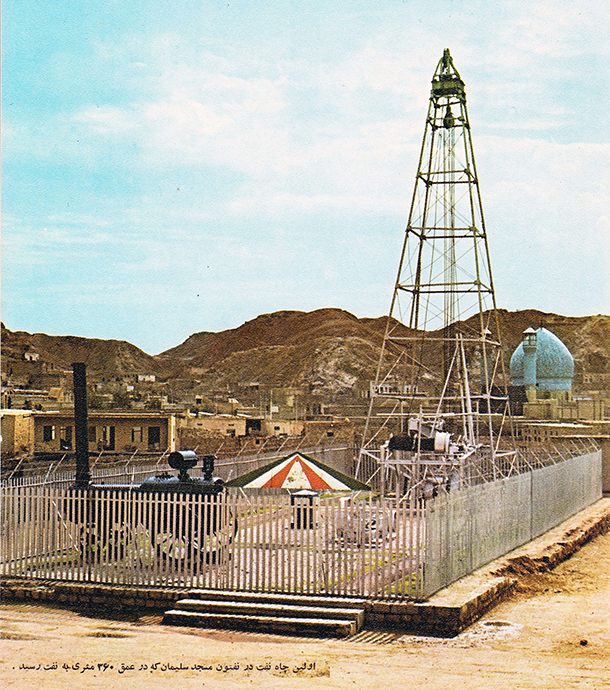
The first oil-producing well in Iran, established in 1908 (Photo: National Iranian Oil Company (NIOC), Wikimedia Commons public domain)
DYKSTRA: Well, a hundred fifteen years ago this week an intrepid explorer named George Reynolds and his wealthy backer, William D’Arcy, signed a deal with the King of Persia allowing them to explore for oil in the land now known as Iran. And for seven years, Reynolds ran out of luck while D’Arcy ran out of money, but on May 26, 1908, first came the unmistakable smell of natural gas, then a gusher in the Iranian desert.
CURWOOD: And the rest, as they say, is history.
DYKSTRA: Oh yeah. D’Arcy and Reynolds’s company became today’s BP. Then BP and later the US oil giants made subsequent deals in Mesopotamia, and that’s Iraq now, of course. Then in the 1930’s oil was discovered in Saudi Arabia, and it’s all shaped the Middle East and impacted world history ever since.
CURWOOD: And certainly the world’s climate. Peter Dykstra’s with Environmental Health News, that’s EHN.org and DailyClimate.org. Thanks Peter, and we’ll talk to you again soon.
DYKSTRA: OK, Steve, thanks a lot. Talk to you soon.
CURWOOD: And there’s more on these stories at our website, LOE.org.
Related links:
- Las Vegas Review-Journal: “MGM Resorts to leave Nevada Power, pay $86.9M exit fee”
- Daily Intelligencer: “As America’s Largest Reservoir Hits Record Low, a Dam Debate Returns”
- Las Vegas Review-Journal: “Nevada’s rooftop solar battle heats up with referendum”
- Greentech Media: “Google’s Project Sunroof Expands to 42 States and Millions More Rooftops”
- About the discovery of oil in Iran
BirdNote®: Eastern Wood-Pewee

Eastern Wood-Pewee (Photo: CC BY-ND 2.0)
[BIRDNOTE® THEME]
Almost every natural ecosystem faces threats these days from human activity.
And as Mary McCann explains in today’s BirdNote®, wildlife managers say a once common and rather inconspicuous woodland flycatcher is now of concern.
http://birdnote.org/show/eastern-wood-pewee-and-eastern-deciduous-forest
BirdNote®
Eastern Wood-Pewee and Eastern Deciduous Forests
[Slurred, whistled “pee-ah-wee” of Eastern Wood-Pewee; repeat]
MCCANN: Each year, by mid-May, a plaintive, whistled song carries through the forests of eastern North America. It is the voice of the Eastern Wood-Pewee, returned to nest after a winter sojourn in South America.
[“Pee-ah-wee” of Eastern Wood-Pewee]

(Photo: Greg Lavaty)
An Eastern Wood-Pewee perches inconspicuously in the shady interior of the forest. Inconspicuous, that is, until it sallies out to snatch a flying insect. Or until it offers up that unmistakable song.
[“Pee-ah-wee” of Eastern Wood-Pewee]
But for the past 25 years, the number of Eastern Wood-Pewees has fallen, across much of the bird’s range. How is it that even a once-common bird can decline so steadily? Fragmentation of forests into ever smaller tracts, as well as forest disturbance — such as heavy browsing by overabundant White-tailed Deer — are part of the problem. So is the loss of forest in the bird’s South American winter range. As a result, the Eastern Wood-Pewee is now a species of high conservation concern.
[“Pee-ah-wee” of Eastern Wood-Pewee]
What practices can help stem the decline of Eastern Wood-Pewees and other forest birds? Well, providing economic incentives for private landowners who save forests is one. Enacting policies that promote smart growth and curb urban sprawl is another.
[“Pee-ah-wee” of Eastern Wood-Pewee]
###
I’m Mary McCann.
Written by Bob Sundstrom
Call of the Eastern Wood-Pewee provided by The Macaulay Library at the Cornell Lab of Ornithology, Ithaca, New York and recorded by G.A. Keller LNS 73930. The fly was recorded by G.F. Budney. Producer: John Kessler
Executive Producer: Chris Peterson
© 2010/2016 Tune In to Nature.org Narrator: Mary McCann
http://birdnote.org/show/eastern-wood-pewee-and-eastern-deciduous-forest
CURWOOD: There are pictures over at our website, LOE.org.
Related links:
- Listen to the original story on the BirdNote® website
- BirdNote®
[MUSIC: JPP, “Tango Bonito,” Devil’s Polska, Hans Lankari, Green Linnet/Xenophile]
CURWOOD: Next time on Living on Earth, the amazing journey of a mountain lion in search of love.
STOLZENBURG: He had left probably when he was a teenager, about a year, year and a half old, and set out on this incredible cross-country journey that may have taken him across at least six states and most of Ontario.
CURWOOD: The big cat who went walkabout. That’s next time, on Living on Earth.
[MUSIC: Harvey Reid, “The Mockingbird,” Dreamer or Believer, traditional American, Woodpecker Records]
CURWOOD: Living on Earth is produced by the World Media Foundation. Our crew includes Naomi Arenberg, Bobby Bascomb, Jenni Doering, Emmett Fitzgerald, Helen Palmer, Peter Boucher, Adelaide Chen, Jaime Kaiser, Jennifer Marquis and Jolanda Omari. And we welcome our new intern, Don Lyman. Tom Tiger engineered our show, with help from Jeff Wade, Jake Rego, and Noel Flatt. Alison Lirish Dean composed our themes. You can find us anytime at LOE.org - and like us, please, on our Facebook page - It’s PRI’s Living on Earth. And we tweet from @LivingonEarth. I'm Steve Curwood. Thanks for listening.
ANNOUNCER1: Funding for Living on Earth comes you, our listeners, and from the University of Massachusetts, Boston, in association with its School for the Environment, developing the next generation of environmental leaders. And from the Grantham Foundation for the protection of the environment, supporting strategic communications and collaboration in solving the world’s most pressing environmental problems. Support also comes from the Energy Foundation, serving the public interest by helping to build a strong, clean, energy economy, from Gilman Ordway, and from SolarCity, America’s solar power provider. SolarCity is dedicated to revolutionizing the way energy is delivered by giving customers a renewable alternative to fossil fuels. Information at 888-997-1703. That’s 888-997-1703.
ANNOUNCER2: PRI. Public Radio International.
Living on Earth wants to hear from you!
Living on Earth
62 Calef Highway, Suite 212
Lee, NH 03861
Telephone: 617-287-4121
E-mail: comments@loe.org
Newsletter [Click here]
Donate to Living on Earth!
Living on Earth is an independent media program and relies entirely on contributions from listeners and institutions supporting public service. Please donate now to preserve an independent environmental voice.
NewsletterLiving on Earth offers a weekly delivery of the show's rundown to your mailbox. Sign up for our newsletter today!
 Sailors For The Sea: Be the change you want to sea.
Sailors For The Sea: Be the change you want to sea.
 The Grantham Foundation for the Protection of the Environment: Committed to protecting and improving the health of the global environment.
The Grantham Foundation for the Protection of the Environment: Committed to protecting and improving the health of the global environment.
 Contribute to Living on Earth and receive, as our gift to you, an archival print of one of Mark Seth Lender's extraordinary wildlife photographs. Follow the link to see Mark's current collection of photographs.
Contribute to Living on Earth and receive, as our gift to you, an archival print of one of Mark Seth Lender's extraordinary wildlife photographs. Follow the link to see Mark's current collection of photographs.
 Buy a signed copy of Mark Seth Lender's book Smeagull the Seagull & support Living on Earth
Buy a signed copy of Mark Seth Lender's book Smeagull the Seagull & support Living on Earth

